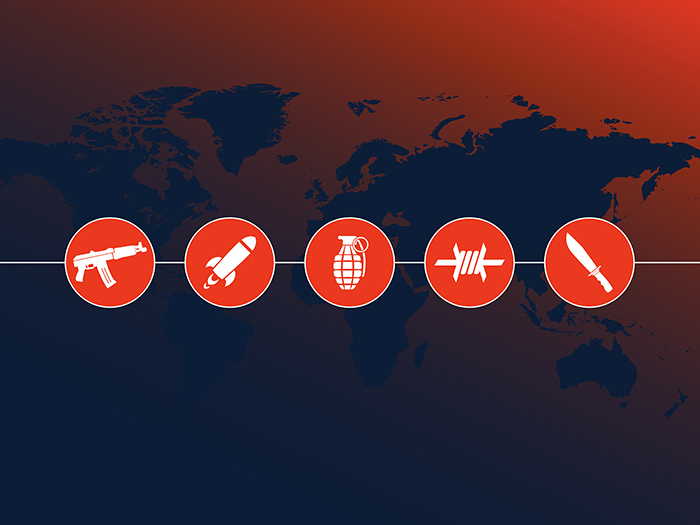Navigating Global Travel Uncertainties: Business Travel Risk Insights from HUB’s Will Mule

Risk & Insurance sat down with Will Mule, executive vice president, Global Risk Solutions Practice Leader for HUB, to discuss the complexities of international business travel, the impact of geopolitical uncertainties on travel insurance, and the importance of preplanning and technology in ensuring the safety of employees on the move.
What follows is a transcript of that conversation, edited for length and clarity.
Risk & Insurance: What are some of the riskiest places to travel these days?
Will Mule: The answer to that question really depends on the current global situation. The Ukraine-Russian conflict is well-documented, and the surrounding areas like Belarus and Poland are all classified as high-risk due to their proximity and association with the conflict.
The Israel conflict is another factor making it a high-risk area. To a lesser extent, China and Taiwan have been on the brink for quite some time, with everyone keeping a watchful eye on developments there.
Even countries like Turkey and Greece, with their islands conflicts, could potentially escalate from medium to high risk with just one spark, similar to what happened with Ukraine and Russia or Israel.
Latin America, unfortunately, remains a high-risk area for issues like kidnappings. However, it’s important to note that there are still plenty of nice and safe places to travel.
We always advise our clients to be vigilant, even in low-risk countries. Never assume everything is okay, and take the same care and attention wherever you’re traveling.
R&I: How quickly can danger levels change in different countries?
WM: Danger levels can change very rapidly. It’s crucial to have a travel plan and stay informed about the latest developments in the countries you’re visiting by tracking updates from the U.S. and foreign offices.
This year, which I’m calling the “election year,” several key elections are taking place in various countries. The outcome of these elections can significantly impact the situation on the ground, as we saw in Peru. Almost overnight, civil unrest erupted in Lima, the capital, due to people’s dissatisfaction with the election results.
As a result, several of my clients were stuck in Peru, and we had to work on evacuating them. It’s important not to assume that you’ll be okay once you leave the main capital thinking you are away from the rioting as other and new dangers can emerge as you enter less populated and policed areas especially if you do not speak the local language. The current global climate means that situations can evolve and change very quickly, no matter where you are.
R&I: How does the current geopolitical uncertainty impact a corporation’s ability to obtain coverage for its business travelers?
WM: The current uncertainty significantly affects several lines of business, not just travel insurance. Terrorism, aviation, marine, and general liability policies are also impacted, especially for high-risk areas.
Carriers are rating these risks separately and, in some cases, refusing to cover certain classes of business or adding exclusions and prohibitive language for specific countries. A typical wording we see from carriers in travel policies is that coverage does not exist for any country with a “do not travel” advisory.
In such situations, you need to ask the carrier to remove this exclusion for a one-off trip. Sometimes they will, sometimes they won’t. For clients who regularly travel to high-risk areas, such as humanitarian organizations working in Israel, carriers may refuse to provide coverage altogether.
In these cases, alternative solutions must be sought, such as self-insurance, higher deductibles, or specialized placements through Lloyd’s of London.
R&I: Are you seeing significant changes in terms of deductibles and risk management protocols for clients traveling to high-risk areas?
WM: Carriers are expecting clients to have significantly more skin in the game when it comes to covering travel to high-risk areas. The days of $1,000 100 deductibles for travel policies are long gone.
In these dangerous places, clients are expected to adhere to more stringent protocols. Some carriers are even insisting that unless clients have a security detail accompanying them, they won’t provide coverage. It’s becoming a basic requirement, similar to how multi-factor authentication is now a baseline for cyber readiness.
Before anything else, we always ask our clients if the travel is truly necessary. Can the business be conducted via Zoom instead? While we don’t want to hinder business, our primary concern is safety. We aim to provide our clients with the right advice regarding their travel decisions.
If travel is unavoidable, we recommend limiting the number of trips and sending only essential personnel. However, the number one question remains: is the travel honestly necessary?
R&I: What impact do well-documented preplanning and communication strategies with executives have on making risks more palatable to underwriters?
WM: Doing the right things, such as having a travel plan and building a business case around the trip, can make a significant difference in how underwriters perceive the risk. It’s essential to have safety and security measures in place.
A key question, which may seem obvious but is crucial, is whether you know at all times where your employees are located around the world. It’s surprising how many companies sometimes struggle with this.
Knowing the exact location of your employees is vital because if something happens overnight in a particular country, you need to be able to quickly ensure their safety depending on their location. These are all critical elements in demonstrating to carriers that you’re not just sending people abroad haphazardly.
There needs to be a plan and purpose, along with security measures and an emergency protocol in place. Employees should know what to do in the event of a problem.
R&I: Can technology play a significant role in ensuring the safety of employees who are traveling for work?
WM: Technology plays a crucial role in helping clients stay informed and safe while traveling. Before the trip even begins, we provide our clients with a list of high-risk countries, along with dos and don’ts, and what to look out for. For example this could includes advice like not wearing an expensive watch when walking through an airport in Mexico, as it can make you a target being seen as a high value asset for kidnap & ransom.
Most carriers also have an emergency travel number that clients can call if they feel unsafe. I’ve witnessed this in action, and it’s quite impressive. When you call the command center, they can locate you via satellite and guide you to safety by providing turn-by-turn directions.
The technology is so detailed and advanced that it can provide real-time information to help a person reach safety quickly and easily. Having access to this kind of technology is essential for ensuring the well-being of travelers.
R&I: How much of a difference can just a couple of blocks make when it comes to safety in cities around the world?
WM: It’s a significant difference, and it’s not just limited to developing countries. Even in developed nations like the US and UK, a mere two blocks can drastically change the safety landscape.
I recently returned from the UK, my home country, and witnessed this firsthand. You can very easily make a wrong turn and suddenly find yourself in a troublesome situation. The stark contrast in safety levels within such a short distance is a reality in cities worldwide.
R&I: What key advice would you give to readers who need to travel internationally for business?
WM: When considering international business travel, the first question to ask is whether the trip is absolutely necessary or if the business can be conducted virtually. As a face-to-face business person myself, I understand the value of in-person meetings, but it’s important to carefully assess the need for travel.
If you determine that the trip is essential, proper preparation is crucial. This begins with thoroughly researching the destination country to understand any travel advisories and potential risks to be aware of. It’s also wise to arrange for a security detail and have a plan in place for worst-case scenarios.
While it’s important to prepare for the worst, you should still expect the best outcome from your trip. As someone who travels frequently, I admit that it’s easy to take safety precautions for granted, especially if you have visited a country or place several times before, this can actually make you more vulnerable as you are less likely to see danger or take as many precautions. However, it’s critical to practice what I preach to my clients and remain vigilant about my surroundings, knowing what to do if I need to quickly get to safety. &










